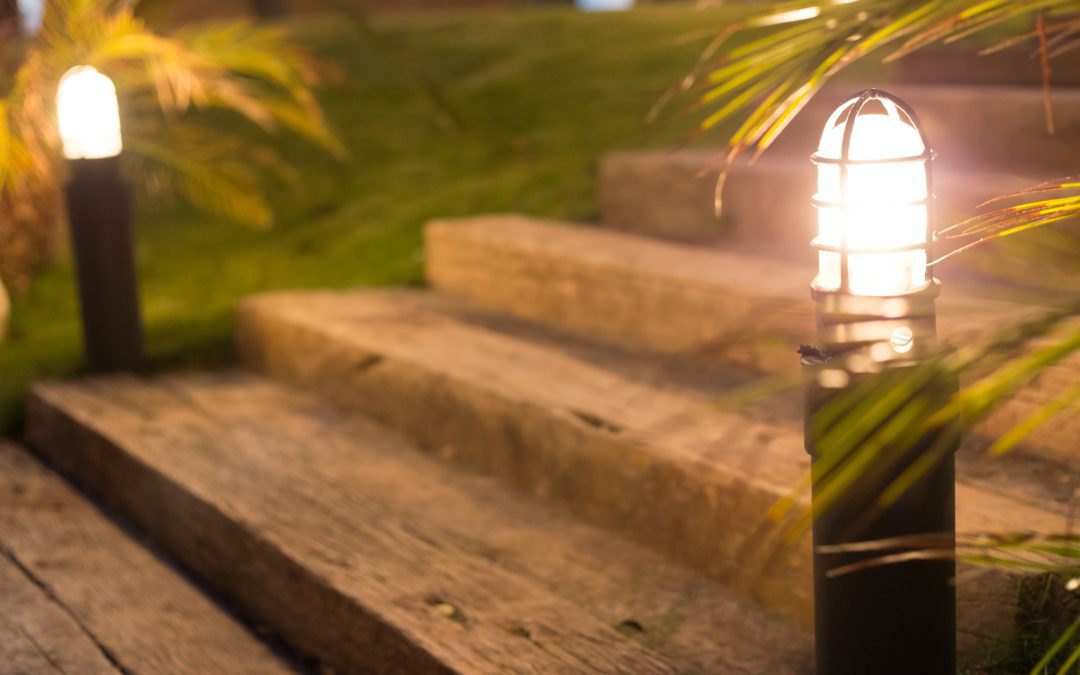Landscape lighting transforms your outdoor space into a mesmerizing place. Whether it highlights architectural features, guides pathways, or creates ambiance for outdoor gatherings, well-designed lighting enhances the beauty and functionality of your landscape. However, proper maintenance is essential to ensure your outdoor lighting system remains effective and dazzling for years.
Here, we’ll explore a few tips for brightening your landscape lighting.
Why Is Landscape Lighting Essential?
Landscape lighting is more than just a decorative addition to outdoor spaces; it enhances safety, security, and aesthetics. Landscape lighting improves visibility and prevents accidents by illuminating pathways, driveways, and entryways, especially at night. Moreover, strategically placed lights can deter intruders and enhance security around the property.
Beyond safety and security, landscape lighting adds ambiance and highlights the beauty of architectural features, trees, and gardens, extending the usability of outdoor areas well into the evening hours. It transforms ordinary landscapes into enchanting and inviting spaces, perfect for relaxing, entertaining, or simply enjoying the beauty of nature after dark. Landscape lighting proves to be essential for practical purposes and for creating a welcoming and visually stunning outdoor environment.
Tips for Long-Lasting Landscape Lighting
Here are a few simple practices that will help preserve the effectiveness and charm of your outdoor lighting system for years to come:
Regular Inspection and Cleaning
By regularly examining fixtures for signs of wear and tear, such as loose connections or corrosion, you can address potential issues before they compromise the functionality of your lighting setup. Also, as plants grow and landscapes evolve, the positioning of your lighting fixtures may need adjustments to maintain optimal illumination. Periodically check and adjust fixtures’ angle, direction, and height to ensure they highlight desired features without causing glare or light pollution.
You can thoroughly clean fixtures and lenses to remove accumulated dirt, debris, and other obstructions that can diminish light output and create shadows. This ensures consistent illumination and enhances the aesthetic appeal of your outdoor space. You can even consider replacing your landscape lighting if the damage is extensive.
Trimming Vegetation
Overgrown bushes, trees, and shrubs can obstruct light beams, resulting in uneven illumination and shadowy areas. Regular trimming helps prevent vegetation from encroaching on fixtures, ensuring unobstructed light distribution and enhancing the overall visibility of your outdoor space. Keeping vegetation neatly trimmed minimizes the risk of branches or leaves damaging fixtures or causing safety hazards.
Trimming vegetation helps maintain your landscape’s overall health and appearance by promoting proper growth and airflow. Regularly trimming trees can preserve the effectiveness and beauty of your landscape lighting system, creating a welcoming and well-lit environment for enjoyment day and night.
Protecting Electrical Components
Moisture is one of the biggest threats to outdoor electrical systems, making waterproofing a top priority. Properly sealing connections with waterproof materials guards against moisture ingress, which can lead to corrosion and electrical malfunctions. Investing in high-quality, weather-resistant fixtures and employing secure mounting techniques shields electrical components from the elements, ensuring reliable performance in all weather conditions. Also, light bulbs in landscape fixtures will dim or burn out over time. Regularly check and replace bulbs to maintain consistent brightness and color temperature. Consider upgrading to energy-efficient LED bulbs for longer lifespan and reduced energy consumption. Consider replacing your landscape lighting with a trending one if needed.
Seasonal Adjustments
As daylight hours fluctuate with the changing seasons, adjusting the timing and intensity of your outdoor lights ensures consistent illumination and energy efficiency. During the longer summer days, dimming lights or shortening operating hours can help conserve energy without sacrificing visibility. Conversely, extending the operating hours or increasing brightness during the darker winter months enhances safety and security while maintaining a welcoming ambiance.
By adapting your lighting schedule to match the natural rhythms of the seasons, you can maximize the effectiveness of your landscape lighting system while minimizing energy consumption and operating costs. Regularly reviewing and adjusting your lighting settings ensures that your outdoor space remains beautifully illuminated and functional, no matter the time of year.
Insect Control
Insects, particularly mosquitoes and moths, are naturally drawn to light sources, which can assemble around your fixtures. This obstructs the light output and creates an unsightly accumulation of bugs and debris on the fixtures and lenses. To address this issue, consider using insect-repellent coatings on your fixtures or installing insect-resistant bulbs to deter pests. Additionally, positioning your lighting fixtures strategically, away from seating areas and entry points, can help minimize insect attraction.
Regularly cleaning your fixtures by removing any accumulated debris or insect residue is also essential for optimal performance. By incorporating effective insect control measures into your landscape lighting maintenance routine, you can preserve the beauty and functionality of your outdoor lighting while minimizing nuisance pests. You can communicate with your landscape lighting design team to customize your needs.
Want to extend the lifespan of your landscape lighting system and enjoy a beautifully illuminated outdoor space for years to come? Our team at Sarasota Landscape Inc. helps you for the best landscape lighting designs. Contact us for more information.

